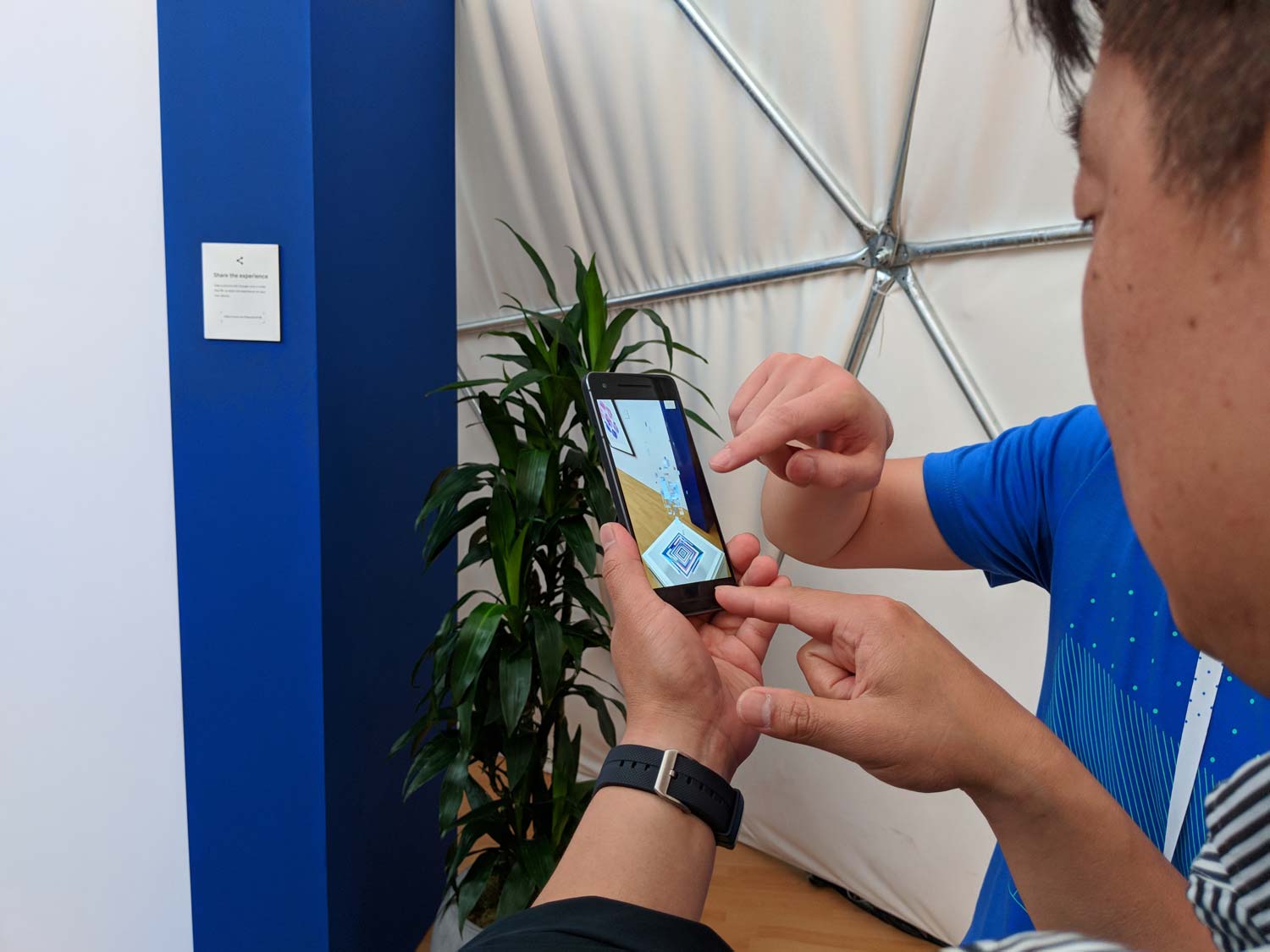Google Just Showed Me the Future of AR (Hint: It's Not Solitary)
A change to Google's ARCore tools means developers can build apps where you'll be able to see the same virtual images on your phone that others are seeing on theirs.
MOUNTAIN VIEW — The colored projectiles start flying at me from across the table, soaking the floating turret in front of me a sickly shade of red. I tried to return fire, using my finger to return fire with my blue projections, but my opponent's aim was too accurate and unrelenting, and I quickly went down to defeat.

My opponent was really there, standing five feet in front of me, but the floating turrets and red-and-blue projectiles were not. Instead, they were virtual objects, appearing on the screens of our smartphones as part of a mobile game Google whipped up to demonstrate the shared augmented reality capabilities coming to its ARCore tools for developers.
Shared AR experiences highlights the changes Google announced for ARCore during its annual developers conference this week, and it should address a major shortcoming of augmented reality — the fact that you're the only person who can see those virtual images floating around your screen. Using a new capability called Cloud Anchors, developers will be able to create experiences that can be shared across multiple devices, whether it's creating a virtual painting or seeing how well virtual furniture fits in a given space.
Of course, games are a natural for shared experiences, which is why Google used its Light Board game to show how ARCore now enables shared points of reference across multiple devices. Setting up the game involved nothing more than moving our phones around to build a point cloud over a flat surface — a table, in our case, though a floor or a wall might work just as well depending on the shared experience.
MORE: Best AR Apps - Augmented Reality Apps for iPhone, Android
One noteworthy thing about shared AR — it works cross-platform. I was using an iPhone 8 Plus while my opponent was playing with a Pixel 2. It's just a matter of the app maker building apps for both Android and iOS.
Google's not exactly a newcomer when it comes to interest in sharing experiences across mixed reality. At the 2017 I/O, the company introduced sharing features to its Daydream platform for virtual reality. But that focused on casting VR experiences to TV screens so that others could see what you're seeing. This addition to ARCore feels much more inclusive.
Get instant access to breaking news, the hottest reviews, great deals and helpful tips.

Shared AR isn't the only addition coming to ARCore. A new Vertical Plane Detection Feature lets developers build apps where users can place VR objects on more services. That can lead to experiences like hanging a virtual picture on your wall to see whether it fits in with your living space. At I/O, Google demoed the feature by showing vertical AR artwork that expanded upward and outward to fill the screen on my smartphone.
Credit: Tom's Guide
Philip Michaels is a Managing Editor at Tom's Guide. He's been covering personal technology since 1999 and was in the building when Steve Jobs showed off the iPhone for the first time. He's been evaluating smartphones since that first iPhone debuted in 2007, and he's been following phone carriers and smartphone plans since 2015. He has strong opinions about Apple, the Oakland Athletics, old movies and proper butchery techniques. Follow him at @PhilipMichaels.

